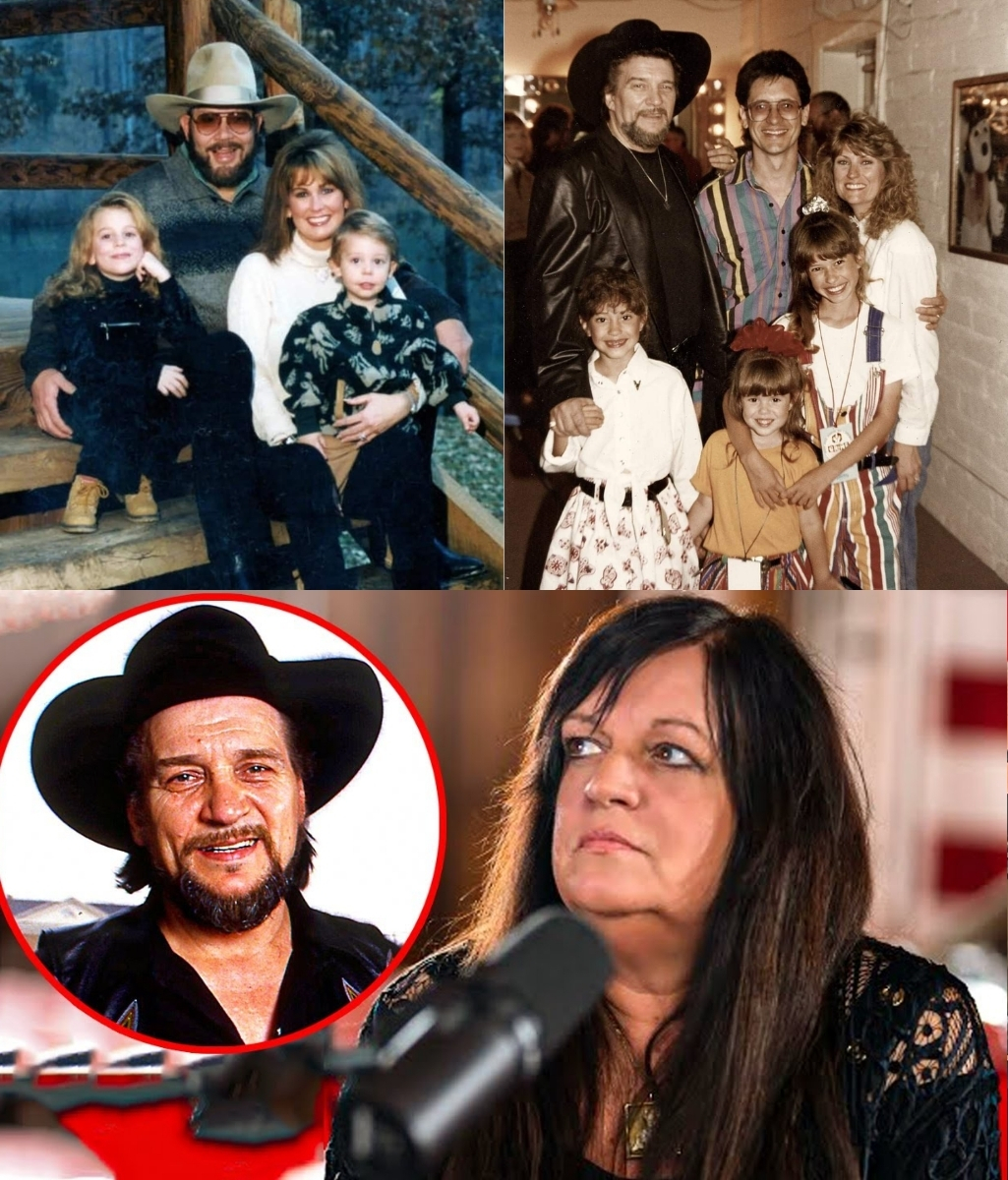
Waylon Jennings’ Daughter Finally Confirms What We Suspected All Along: The Tragic Life Behind the Legend
Waylon Jennings will always be remembered as a titan of country music, a pioneer of the outlaw movement, and an unapologetic voice for artistic freedom. But behind the hits and the rugged image was a man tormented by pain, addiction, guilt, and deteriorating health. In a heartbreaking revelation, Jennings’ daughter has now confirmed what many fans long suspected—that his struggles ran far deeper than anyone truly knew.
The Survivor’s Guilt That Haunted Him Forever
Waylon Jennings’ tragic journey began long before fame. In 1959, his life took a haunting turn when he gave up his seat on Buddy Holly’s ill-fated plane ride—a last-minute decision that saved his life, but condemned him to years of guilt.
As legend has it, after agreeing to give his seat to J.P. Richardson (The Big Bopper), Buddy Holly jokingly told Jennings, “I hope your ol’ bus freezes up,” to which Jennings replied, “I hope your ol’ plane crashes.” Hours later, the plane crashed, killing Buddy Holly, Richie Valens, Richardson, and the pilot. Jennings was devastated, and the guilt from that one joke reportedly haunted him for the rest of his life.
Four Marriages, One Salvation
Jennings’ personal life was a rollercoaster of love and loss. He was married four times, with each failed relationship leaving emotional scars. But everything changed when he met fellow country singer Jessi Colter. Their 1969 marriage not only endured decades of fame and turbulence—it saved his life.
Jessi was more than a wife. She was his lifeline. When Jennings was spiraling from addiction, depression, and self-destructive behavior, it was Jessi who stepped in. “I weighed 138 pounds and was bent on self-destruction,” Jennings once admitted. Her love grounded him. Her faith pulled him back from the edge.
The Descent into Addiction
Throughout the 1970s and early 1980s, Waylon Jennings was consumed by cocaine addiction, spending up to $1,500 a day on the drug. The 1977 arrest at a Nashville recording studio for possession didn’t stop him. The fame, money, and pressure kept him locked in a cycle of substance abuse.
His lowest point came in 1984 during a concert in Portland, Oregon. Jennings stumbled on stage, slurred his lyrics, and was booed off—a devastating wake-up call. His health was failing, and even eating became impossible. Jessi Colter resorted to feeding him protein shakes just to keep him alive.
Going Cold Turkey in the Arizona Desert
Refusing traditional rehab, Jennings made a bold choice: he quit cocaine cold turkey. He flushed $20,000 worth of drugs down the toilet and secluded himself in the Arizona desert. It was there—with nothing but family, silence, and determination—that he fought his way to sobriety.
He succeeded. Jennings beat his addiction. But the damage was done.
The Price of the Past: Heart Disease and Diabetes
Years of addiction and poor health habits caught up to him. In 1988, Jennings underwent a balloon angioplasty. A few months later, he suffered another health scare, resulting in triple bypass surgery. The surgeries were successful, but the lifestyle changes were drastic. He quit smoking and drastically altered his diet, but the battle was far from over.
Later, Jennings was diagnosed with type 2 diabetes, which eventually led to vascular disease in both legs. In 2000, he underwent painful surgery, and by 2001, an infection in his foot forced doctors to amputate it in a desperate bid to save his life. But it was too late. On February 13, 2002, Jennings died at 64 due to complications from diabetes.
Bankruptcy, Mismanagement, and the Cost of Fame
Despite massive success, Jennings struggled financially. He filed for bankruptcy in 1981, owing over $2.5 million. A massive entourage, expensive production setups, and his addiction drained his earnings. The same drive that made him a touring legend also pushed him into financial ruin.
Confirmed by His Daughter: The Emotional Toll of His Life
Jennings’ daughter has now confirmed the emotional devastation he experienced throughout his life—particularly the survivor’s guilt from 1959 and the years of regret about the pain he caused those who loved him. She painted a picture of a man who sang about freedom but felt trapped inside, who gave the world music but couldn’t find peace for himself.
Through her words, fans now better understand the cost of Waylon Jennings’ legend. Behind the outlaw image was a fragile man fighting to survive.
